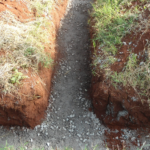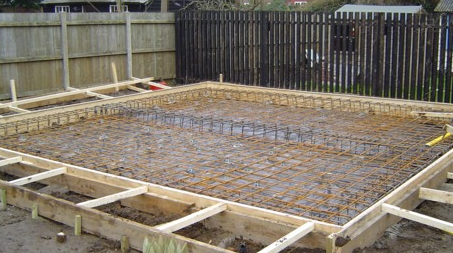Why are Conservatory Foundations Important?

7 things to Check Before Getting Conservatory Cost Quotes
April 11, 2019
5 tips to keep your UPVC conservatory cooler in Summer
November 21, 2019What are the main types of conservatory foundations?
A short buyers guide to the key features of 3 types of conservatory base.
There is an old saying that goes something like “out of sight is out of mind”. In other words, people tend not to think about things that they don’t see regularly.
This is often the case with conservatory foundations. They are certainly out of sight, but they should not be out of mind, especially when you are in the early stages of buying a new conservatory.
Not having the right type of base under your conservatory extension can lead to significant (and expensive to rectify) problems developing over time.
Why are Conservatory Foundations Important?
It’s very simple, they support all the weight of the building. If they drop (settle), move or otherwise deform it will lead to deformation of the conservatory itself. This can lead to misaligned doors or windows, leaks and in extreme cases, total failure of the structure.
What are the main types of conservatory foundations?
The most common types of conservatory foundations are:
- Trench or strip foundations
- Rafts
- Steel framed
1. Trench or strip foundations
 Considered by many as the best type of base in any type of ground, the strip foundation is basically a trench dug to a depth of between 500mm to 1500mm. The bottom of the trench is then filled with concrete of at least 150mm thickness.
Considered by many as the best type of base in any type of ground, the strip foundation is basically a trench dug to a depth of between 500mm to 1500mm. The bottom of the trench is then filled with concrete of at least 150mm thickness.
Typically, a brick or block cavity wall is built on top of the concrete up to the desired floor level. The width of the trench should be wide enough to accommodate the thickness of the cavity wall plus 100mm each side.
So if you have a cavity wall with 2 x skins of 100mm block or brick plus a cavity of 50mm, the overall width of the trench should be at least 450mm.
2. Raft bases
 A comparatively simple conservatory base. In effect, you have a large single slab of concrete poured onto pre-prepared ground. The concrete is reinforced usually with a steel mat.
A comparatively simple conservatory base. In effect, you have a large single slab of concrete poured onto pre-prepared ground. The concrete is reinforced usually with a steel mat.
The ground under the slab is typically prepared by removing the top soil and laying down 150mm of hardcore stone. The concrete slab can be between 150mm to 300mm thick depending on local ground conditions.
The idea of the raft foundation is to spread the building load over as large an area as possible. As such, they are often considered a better option in poor ground conditions.
However, you are advised to consult with a qualified surveyor who can advise on the appropriateness
3. Steel framed bases.
 Again a relatively simple method of creating a base for your new conservatory.
Again a relatively simple method of creating a base for your new conservatory.
A number of concrete pads or plinths are set at specific spots in the ground and then a steel framed conservatory base is fitted to sit on top of the pads.
The advantages of this system is that it involves far less removal of soil and can be quite effective over uneven ground.
The installation time compared to strip foundations, as well as the cost, is greatly reduced.
Which is the best conservatory foundation for me?
Where the ground conditions are good, then a steel framed or raft base should be way less expensive and time consuming to use than strip foundations, simply based on the amount of labour & material needed.
So if lower costs & speed of installation are your priorities, then they could prove to be the best idea.
Having said that, it is very important to understand the ground conditions upon which your conservatory is being built. This factor alone can determine which is the best type of conservatory foundations for you to use.
We always recommend that you have the job professionally surveyed beforehand. Not only that, but get quotes and recommendations from at least 3 or 4 different conservatory installers to compare prices and advice.
This article may also be of some help: 7 often overlooked issues
Get your free quotes from accredited conservatory professionals here: